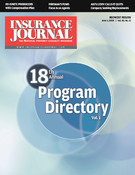Law Bars State from Regulating Insolvent PRI
New York’s second-largest medical malpractice insurer is more than $43 million in the hole, according to new regulatory filings, but state regulators are legally forbidden from initiating the process to liquidate or otherwise overhaul the company.
The March 31 quarterly financial statement for Long Island-based Physicians’ Reciprocal Insurers (PRI) shows a negative surplus of more than $43 million. PRI insures roughly 25 percent of doctors in New York.
A negative surplus means the company could be without cash to pay medical malpractice claims, although there is no indication that has happened.
“It is without question that the policyholders of PRI are secure in their insurance,” said Anthony Bonomo, chief executive officer of PRI. “Simply stated, PRI has and continues to pay all claims and is in a position to satisfy all of its obligations to its policyholders on the strength of its cash flow.”
Bonomo says the negative surplus shown in the documents required by state regulators fails to take into account cash flow analysis and claims reserve analysis.
“PRI and others have been supporting legislation in Albany to change the way in which medical malpractice insurers’ financial strength is measured… if Albany acts this year on this reform, there will not be the opportunity for such misleading reporting in the future.”
New York’s medical malpractice insurance market is dominated by two companies: PRI and Medical Liability Mutual Insurance Co. (MLMI), which insures roughly two-thirds of the state’s physicians. By contrast, MLMI had a surplus of more than $287 million at the end of 2008.
Insuring doctors has been a legal and political minefield in New York over the last several years. Two year ago, the state froze premium just after companies were granted a 14 percent premium increase. In August, Gov. David Paterson again froze rates for a year.
In 2007, the state assembled a task force of doctors, policymakers and insurance experts to find ways to reduce the cost-burden on doctors, many of whom cite the high cost of medical malpractice insurance a key reason for leaving the state to practice elsewhere. Many were critical of the group, particularly of its plan to create an indemnity pool for health care providers.
Despite PRI’s negative surplus, the New York State Insurance Department is forbidden by law from putting any medical malpractice insurer in the state into liquidation or using some other form of receivership in an attempt to correct a company’s financial standing. The New York Insurance Department declined to comment on the situation.
“Fortunately, PRI is an admitted carrier in New York, so the state guaranty fund would cover (some) unpaid losses,” said Tim Dodge of the Independent Insurance Agents and Brokers of New York. “This coverage should reduce the probability that brokers who placed risks with PRI could become targets of lawsuits.”
However, Dodge said, if PRI ceased writing business in the state for any reason, it would “leave brokers scrambling for markets to replace it” and finding them, for brokers, “may be a very tall order.”
Topics Carriers Agencies Excess Surplus New York
Was this article valuable?
Here are more articles you may enjoy.


 Cloudy Future for Bourbon Has Jim Beam Closing Distillery for a Year
Cloudy Future for Bourbon Has Jim Beam Closing Distillery for a Year  Stepbrother Suspect in Cruise Ship Death Says He Doesn’t Remember Anything
Stepbrother Suspect in Cruise Ship Death Says He Doesn’t Remember Anything  Freight Broker Says $400K in Lobster Meat Stolen in Fictitious Pickup
Freight Broker Says $400K in Lobster Meat Stolen in Fictitious Pickup  Severity Was Up, But Will Falling Claims Volume Impact the Profession?
Severity Was Up, But Will Falling Claims Volume Impact the Profession? 


